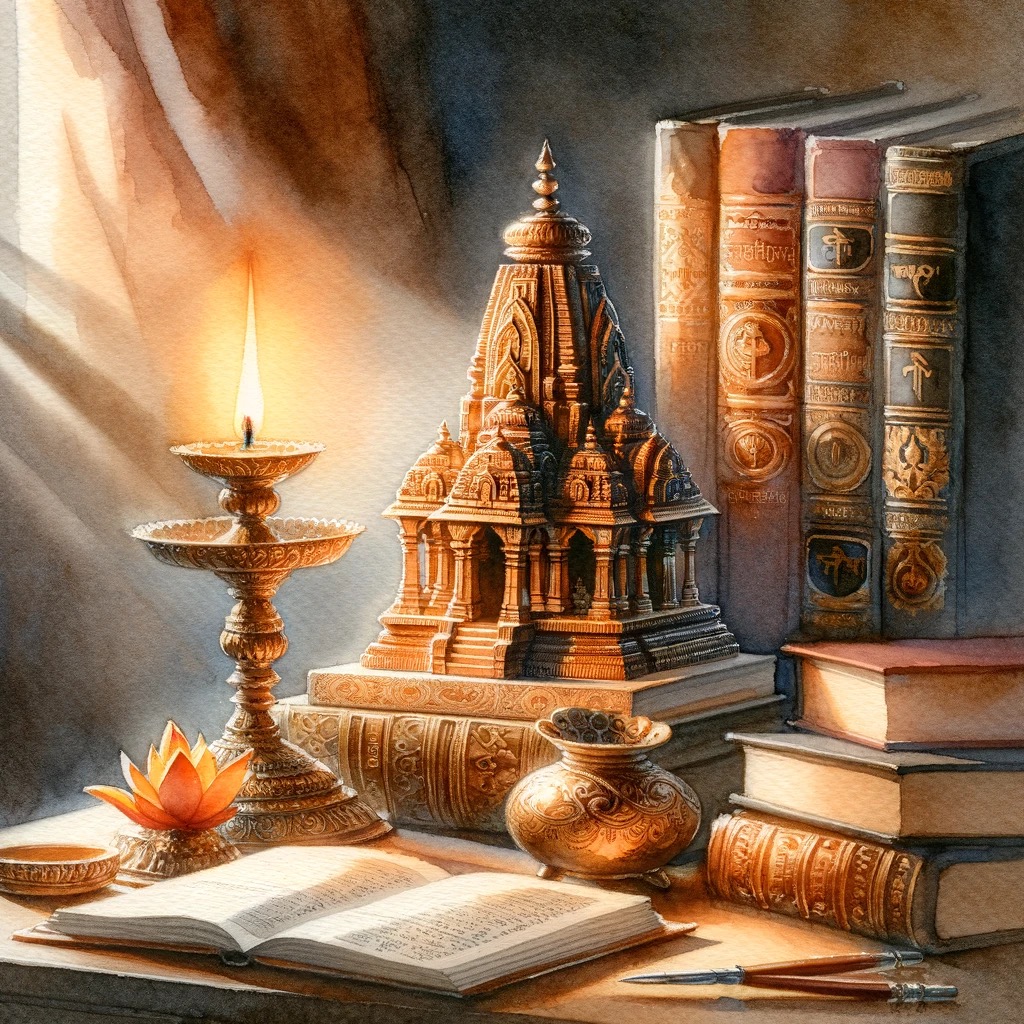Introduction to Pañcāṅgam and Muhūrta
Following the enthusiastic response last year with over 700+ participants, this course on Pañcāṅgam—the Indian calendrical system— is now added with a new component of Muhūrta Śāstra. This course offers a deeper understanding of the Pañcāṅgam and a foundational understanding of Muhūrta and their practical applications in both traditional and modern contexts.
Overview
Vāra: The day of the week
Nakṣatra: One of the 27 constellations
Yoga: An element derived from a specific alignment of the sun and moon in the way they move together
Karaṇa: Loosely equivalent to half of a tithi
Structure
Time Commitment:
- 7 weeks (2 modules per week)
- 3 lecture hours per week
- 2-3 hours per week additionally for readings and assignments
- Course notes: (provided in digital format)
- Access to a computer with internet connection
- Drik Panchang: Browser Version or Mobile App
- Traditional, physical Pañcāṅgam of your region
Contents
Module 1
Module 1: Introduction to Pañcāṅgam and Modern Tools
Module 2
Module 2: Foundations - Understanding the Cosmos
Module 3
Module 3: Nakṣatras In-Depth
Module 4
Module 4: Time Divisions in Pañcāṅgam
Module 5
Module 5: Māsa (Lunar Months) and Seasonal Calculations
Module 6
Module 6: Yogas and Karaṇas - The Building Blocks of Prediction
Module 7
Module 7: Muhūrta - The Art of Timing
Module 8
Module 8: Advanced Pañcāṅgam Concepts
Module 9
Module 9: Festivals and Rituals - Pañcāṅgam in Practice
Module 10
Module 10: Comparative Calendrical Systems
Module 11
Module 11: Traditional Methods vs. Modern Applications
Module 12
Module 12: Introduction to Muhūrta
Module 13
-
Modules 13 and 14: Practical explanation of Muhūrta
-
Modules 13 and 14: Practical explanation of Muhūrta
Session Recordings

Module 1
Module 1: Introduction to Pañcāṅgam and Modern Tools

Module 2
Module 2: Foundations - Understanding the Cosmos

Module 3
Module 3: Nakṣatras In-Depth

Module 4
Module 4: Time Divisions in Pañcāṅgam

Module 5
Module 5: Māsa (Lunar Months) and Seasonal Calculations

Module 6
Module 6: Yogas and Karaṇas - The Building Blocks of Prediction

Module 7
Module 7: Muhūrta - The Art of Timing

Module 8
Module 8: Advanced Pañcāṅgam Concepts

Module 9
Module 9: Festivals and Rituals - Pañcāṅgam in Practice

Module 10
Module 10: Comparative Calendrical Systems

Module 11
Module 11: Traditional Methods vs. Modern Applications

Module 12
Module 12: Introduction to Muhūrta

Module 13
Modules 13 and 14: Practical explanation of Muhūrta

Module 13
Modules 13 and 14: Practical explanation of Muhūrta
Sign up to view session recordings
These recordings are part of our member-only exclusive access.
Upgrade to get full access to all course recordings and other membership benefits
Key Takeaways
Understand:
The fundamental principles and components of Pañcāṅgam
Calculate and Interpret:
The various elements of Pañcāṅgam
Apply:
The knowledge of the Pañcāṅgam to determine auspicious timings and festival dates
Use:
Both traditional methods and modern software (particularly Drik Pañcāṅgam) for Pañcāṅgam calculations
Appreciate:
The cultural and astrological significance of Pañcāṅgam across different regions
Find:
Muhūrtas for key events of life like travels, gṛha praveśa, marriage, etc.
Who is this course for?
- - Learners and Seekers curious to understand and apply the Pañcāṅgam knowledge. - Students, ācāryas, and parents looking to find auspicious muhūrtas for key events. - Practitioners and enthusiasts keen on exploring the Vaidika method of timekeeping, using traditional and modern mediums. - Cultural and heritage enthusiasts who want to reconnect with the ancient Indian wisdom, their contemporary relevance, and its cultural significance.
Know your Instructor

Nilmadhab Prasad Sahi
Nilmadhab Prasad Sahi, who goes by the pen name Vedanjanam on social media, is a Vaidika astrologer based in Mumbai. As a lifelong seeker of Indian Knowledge Systems, particularly Vedānta and Nyāya, he embarked on his journey into classical Parāśari Astrology in 2022.
With the blessings of his Guru and Iṣṭa, he quickly mastered its foundational principles. A Triskandhī Jyotiṣī, Vedanjanam has cultivated deep expertise across Jātaka (natal astrology), Siddhānta (astronomical calculations), and Samhitā (mundane astrology).
His passion lies in the mathematical astronomy of the Vedas, with a particular focus on the principles of the Sūrya Siddhānta; and the later contributions of luminaries such as Āryabhaṭa, Brahmagupta, and Varāhamihira, as well as modern scholars like Bapu Shastri Ketkar.
In addition to his astrological pursuits, Nilmadhab provides strategic consulting for both Indian and multinational corporations. His previous leadership roles include senior positions at renowned organizations such as Hamilton Housewares Pvt. Ltd., Mahindra & Mahindra Ltd., Tata Motors Ltd., and Kansai Nerolac Paints. He holds formal degrees in Physics and Management.
Our Draṣṭā online courses are designed to help you in your learning journey
Become a part of the community and engage, share, discuss and deepen your learnings
Interact with the course instructor through live sessions
Access to session recordings and materials


Become a member and dive into the Indic universe
Brhat subscription gives access to exclusive member-only content rooted in the Dharmic worldview.
Starts at ₹500 per month.